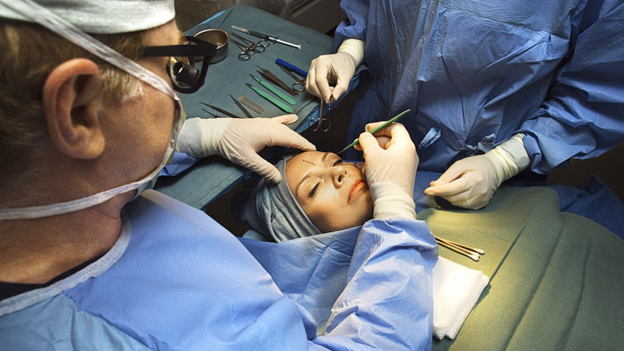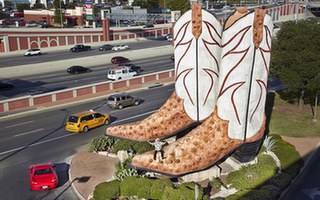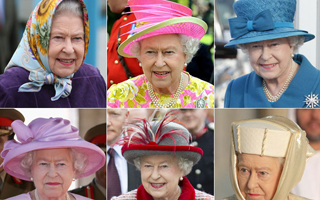课文内容
词汇:Plastic surgery 整形手术
Everybody has looked in the mirror at some point in their lives and thought they could do with a smaller nose or fewer wrinkles. Almost 10 million operations were performed in 2014, according to the International Society of Aesthetic Plastic Surgery. Eyelid surgery topped the list of the five most popular procedures, which included breast augmentation and rhinoplasty.
We hear a lot about cosmetic surgery these days. But what many people may not realise is that reconstructing someone's face has an ancient past. There are reports of treatments to restore a broken nose in ancient Egyptian documents.
Considering that safe anaesthetics and antibiotics were only discovered in the 19th and 20th centuries, it was a truly painful and risky business to go under the knife in the past. But as far back as the mid-15th century nose jobs were carried out using skin taken from the upper arm.
Plastic surgery went through a revolution during World War One. The trenches protected the soldiers' bodies, but many who stuck their heads up were exposed to explosions. New techniques were developed by Harold Gillies who ran a ward at the Cambridge Military Hospital in Britain, and later a whole hospital dedicated to helping disfigured soldiers. Many wounded men at that time couldn't stand looking at their own faces. There were no mirrors in the hospital. In parks near the hospital, some benches were painted blue to signal to patients with facial injuries that they could sit there. And it was a way of telling local residents to prepare for the shock of seeing someone with a disfigured face.
Plastic surgery has come a long way since then. It reconstructs what does need reconstructing but it also makes people with no particular problems feel more confident. Bigger breasts? Straight nose? Facelift? In many cases, cosmetic surgery isn't a necessity at all, just a choice. But when done properly by capable doctors on patients who have a realistic goal, it's believed that plastic surgery can heal psychological wounds almost as much as physical ones.
词汇表
can do with 需要
wrinkle 皱纹
procedure 手术
breast augmentation 隆胸
rhinoplasty 鼻子整形
cosmetic surgery 整容手术
anaesthetic 麻醉剂
antibiotic 抗生素
to go under the knife 开刀,做手术
nose job 鼻子整形手术
trench 战壕
ward 病房
disfigured 毁坏了外形或容貌的
facelift 去皱整容手术,面部拉皮手术
realistic 现实的;合情合理的
测验与练习
1. 阅读课文并回答问题。
1. On which part of the body do people have cosmetic surgery the most?
2. Is a procedure to repair the bones in a broken leg an example of cosmetic surgery?
3. Which developments have made plastic surgery safer and less painful in our time?
4. How were members of the public living close to a plastic surgery hospital in Britain in the early 20th century prepared for the shock of seeing patients with face injuries?
5. Which noun in the article means 'person who lives in a particular area'?
2. 请你在不参考课文的情况下完成下列练习。从每个表格中选择一个意思合适的单词填入句子的空格处。
1. Mary's forehead and cheeks were making her look old. She thought it was time to have __________.
a nose job a breast augmentation a facelift a rhinoplasty
2. I have bad flu and the doctor told me to take __________.
antibiotics an anaesthetic a nose job a procedure
3. Peter needed some plastic surgery after the car accident. He had some bad ___________ injuries.
disfigured facial rhinoplasty facelift
4. The new hospital is very big. It has five __________.
trenches benches procedures wards
5. Janet is not afraid of going under the knife. Her surgeon is very __________.
safe unrealistic capable realistic
答案与词汇
1. 阅读课文并回答问题。
1. On which part of the body do people have cosmetic surgery the most?
Eyelid surgery topped the list of the five most popular procedures in 2014.
2. Is a procedure to repair the bones in a broken leg an example of cosmetic surgery?
False. 'Cosmetic' is related to appearance and the repair of a broken leg has to do with walking and not looking good.
3. Which developments have made plastic surgery safer and less painful in our time?
The discovery of antibiotics and anaesthetics.
4. How were members of the public living close to a plastic surgery hospital in Britain in the early 20th century prepared for the shock of seeing patients with face injuries?
They knew that benches painted blue in the neighbourhood park were for patients with horrific facial injuries.
5. Which noun in the article means 'a person who lives in a particular area'?
A resident.
2. 请你在不参考课文的情况下完成下列练习。从每个表格中选择一个意思合适的单词填入句子的空格处。
1. Mary's forehead and cheeks were making her look old. She thought it was time to have a facelift.
2. I have bad flu and the doctor told me to take antibiotics.
3. Peter needed some plastic surgery after the car accident. He had some bad facial injuries.
4. The new hospital is very big. It has five wards.
5. Janet is not afraid of going under the knife. Her surgeon is very capable.













